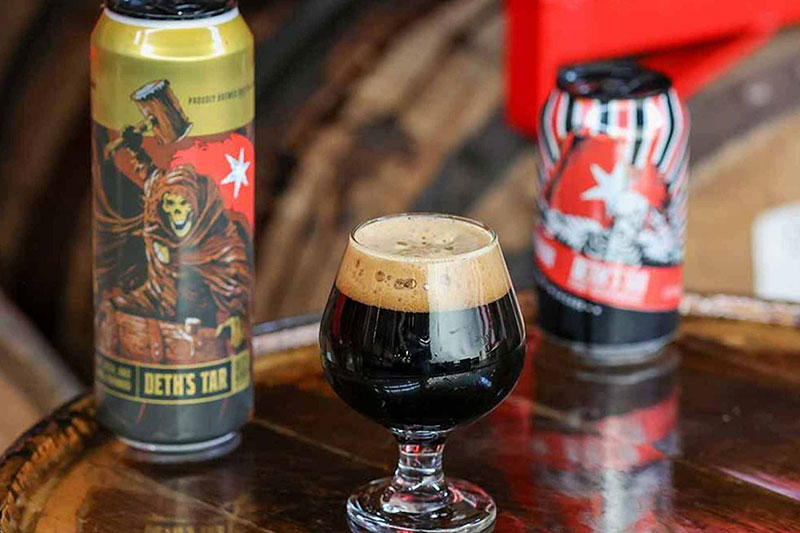
We’ve just covered the tip of the iceberg with stout styles, previously chatting with experts about high-octane imperial stouts, making pastry stouts taste just like dessert, and implementing lactose in milk stouts. Another popular take on the style is oatmeal stout.
Getting its name from the addition of oats, oatmeal stouts might be a lesser-known version of the style, but a lot of big-name breweries across the country make some excellent versions.
We chatted with Eighth State Brewing and Revolution Brewing, both of which make excellent oatmeal stouts, to learn the best way to add oats, how much to use, what is the best grist, how to balance the sweetness, and more.
(Above photography courtesy of Revolution Brewing Company)
What We’ll Cover in This Piece:
Affordable, Industry-Leading Brewery Software
How Do the Experts Define Oatmeal Stout?
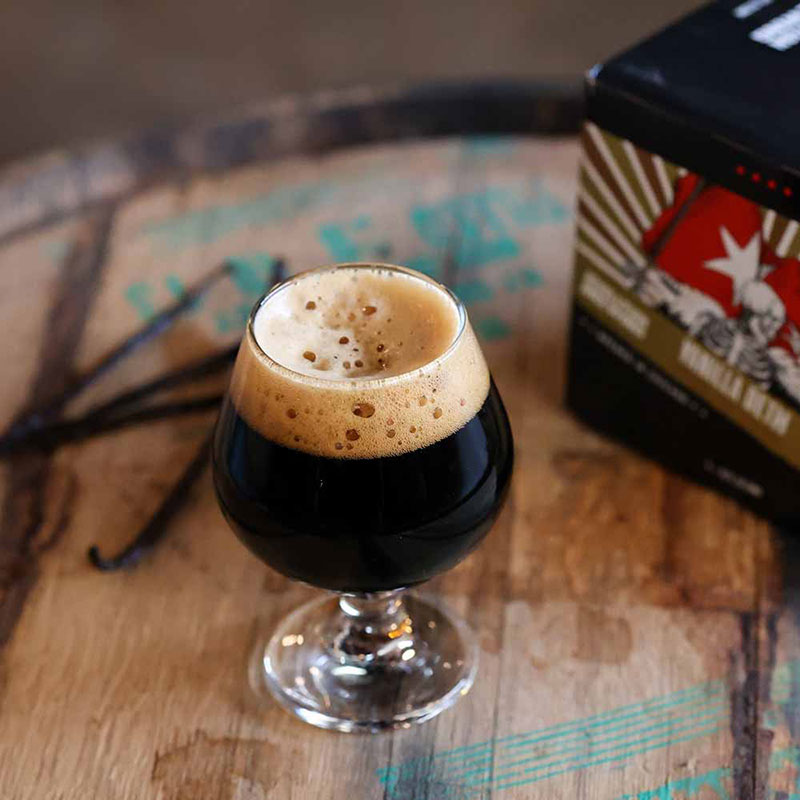
Photography courtesy of Revolution Brewing Company
Eighth State Co-Founder and Head Brewer Cameron Owen says that oatmeal stout is all about the body, which he says adds to the silkiness of the beer.
“At a high enough rate, you can give a granola characteristic to it. It helps round out the beer and make it more palatable,” Owen says. “We have an imperial stout that is 14% ABV, [so] things like oats help add that body to compensate with the heat coming from the beer.”
For Revolution Head Brewer Jim Cibak, he feels oatmeal stouts are sweeter, along the same lines as a milk stout, and have a velvety texture.
“I’m looking for roasty texture in oatmeal stout,” Cibak says. “[The difference between] stouts vs. porter is roasted barley and black barley. In an oatmeal stout, roasted barley is a key factor, and dark malt complexity can be boosted with other dark malts.”
What’s the Best Way to Integrate Oats in Oatmeal Stout?
“I would probably be using primarily milled oats, not flaked oats,” Owen says.
The Eighth State brewer says that flaked oats definitely have a place in an oatmeal stout, but it could have complications if you’re using it in excess.
“If you use too much, you’re gonna have stuck mash—which can be a really annoying day,” he says. “Also at the same time, if you want an oatmeal stout and want oats as twenty to thirty percent of the grist, that’s when you want to stay away from the flaked options because you can get other products.”
Cibak echoes what Owen says about the oats leading to a stuck mash, but advises how you can counteract that.
“Use rice hulls in there, mix it with mash and lauter tun to avoid getting too gummy and stuck together. That takes a long run-off and extraction isn’t quite as efficient,” Cibak says.
He adds, “If you are doing single-infusion mash, add the flaked stuff at the end so it’s close to the top of the grain bed so they are far away from screens in lauter tun.”
If you have a mash mixer, Cibak says that’s where adding rice hulls or oat malts helps. The hull acts as a dual-purpose grain: creating a silky texture and more structure in your grain bed.
How Much Oats Do You Need in an Oatmeal Stout?
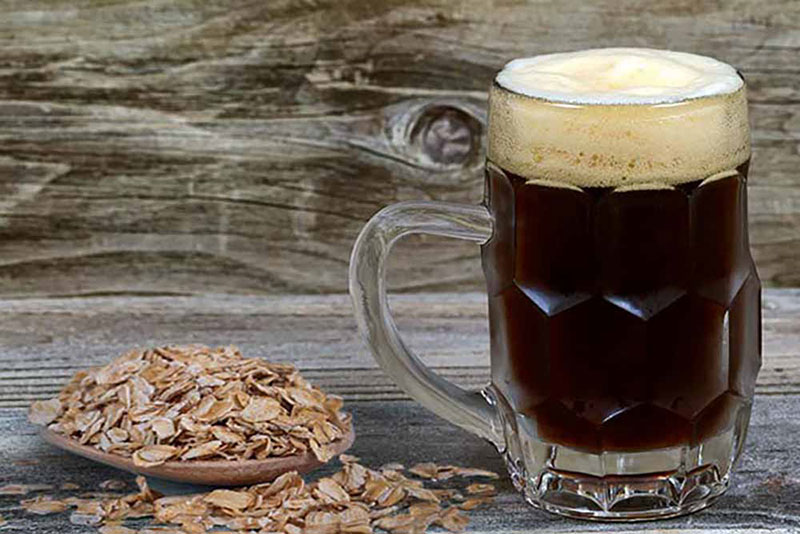
Photography courtesy of Kegerator.com
Owen reiterates that, in his three-barrel system, he likes twenty percent to thirty percent of his grain bill to be a variation of oats.
“It’s kinda high, but it influences the beer,” Owen says. “Most of the time, [the oats are split with] about eighty percent malted oats and the remaining is flaked oats. Mainly at least seventy-five percent of the oat is malted oats.”
Cibak says that Revolution makes a low-ABV stout as well as an imperial stout. With the standard stout, he says the flaked oats account for about five to ten percent.
“With the imperial stout, flaked oats are about seven percent and oat malts are four percent. The total oat is at eleven percent,” he says. “We have a big wide lauter tun and oat malt gives good structure.”
What Is an Ideal Grist for Oatmeal Stout?
Beyond the oats, Cibak highlights the rest of the grist to create the best version of an oatmeal stout.
“The roasted barley and black malt is six percent and five percent, respectively, and crystal malt is at four percent,” he says, noting that for traditional stouts, he opts for Thomas Fawcett malts for the specialty malts. “The remaining seventy-four percent is all pale malts.”
Cibak adds, “Another tip when mashing: Add dark malts toward the end of the mash. We don’t want the dark malts to over-acidify the mash water pH. We like to add those in the last fifteen minutes of the mash.”
Owen says they are changing things up with their grains and boil times based on what they are attempting to achieve with the finished product.
“We use standard base and roast malts to get the flavor profile outside the body. Depending on the day, we might use black malt or not, otherwise, we’ll add a Carafa,” Owen says. “We’re basing the grain bill on what the end product will be and change the intensity of the malts from that.”
Which Hops Balance Out Your Oatmeal Stout?
Owen says they just go for high alpha hops for their stouts.
“For a while, we were using Tetra to help with head retention,” Owen says. “Normally we just do a sixty-minute addition. It ends up being between thirty and forty IBUs.”
Cibak points out that they boil for about an hour and a half on their stouts (three hours for imperial stouts) and focus “predominantly on East Kent Goldings and Fuggle hops to stay true to the English style,” he says.
“We add a bitter addition at the start of the boil and secondary in the whirlpool or very late in the boil,” Cibak says, adding they shoot for twenty-five to thirty IBUs. “We don’t want a hop-forward beer, just trying to balance the grains with an earthy hop aromatic.”
Cibak continues, “When you have a lot of dark malts in there, you get acrid from that, and then with the bitterness you get out of balance. You want a smooth, round beer, not a sharp bitterness or bite.”
Which Yeast Works Well in Oatmeal Stouts?
For Owen, he says they opt for a standard Cali Ale yeast or Superyeast.
“Cali is a good one to go to since it’s great at fermenting,” he says.
Cibak, staying true to the English style of the stout, says they use a 1968 English Ale yeast.
“You get enough fermentation and leave a nice malty body beer,” he says. “We pitch the imperial stout at two-and-a-half to three million cells per million. The standard stout we pitch one million cells per million.”
He adds, “We oxygenate fifteen liters per minute to get as much oxygen into the wort stream to invigorate the fermentation.”
What ABV Should You Shoot for in Your Oatmeal Stout?
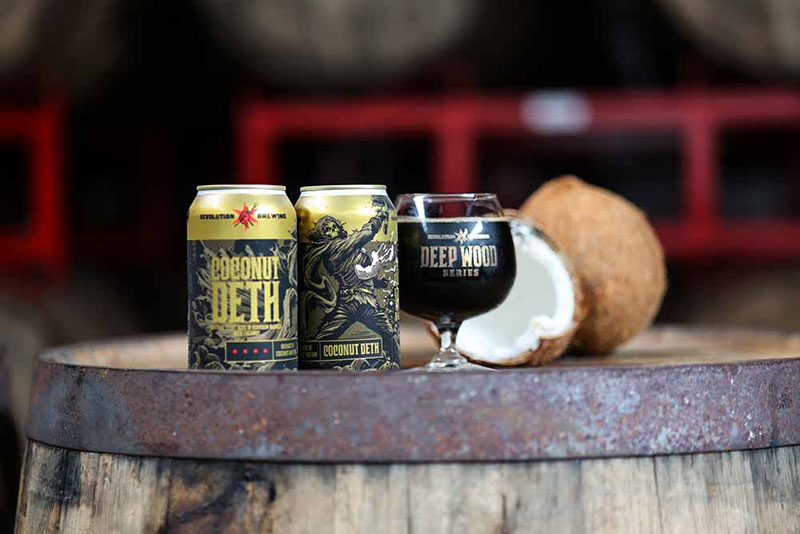
Photography courtesy of Revolution Brewing Company
Owen admits that “we treat our beers as pseudo experiments.” With that, he says the beer decides where it wants to land.
“We have general ideas of where we want it to go and make changes on previous styles if we don’t like it,” he says. “We’ll usually see our beers go anywhere from 12% ABV to 14.5% ABV.”
Cibak says he prefers a lower ABV stout.
“I really think 5.5% ABV is a really good sessionable stout,” he says. “I’m seeking out beers a little lower in ABV; they are balanced, smoother, and enjoyable. When you hit all the boxes, every sip is like a brand-new experience. When you are done, you look at your glass and you’re sad: You need another one immediately.”
Revolution also does an imperial stout that Cibak says targets around 12.5% ABV to 13% ABV, which they age for up to eighteen months.
Two Great Examples of Oatmeal Stout
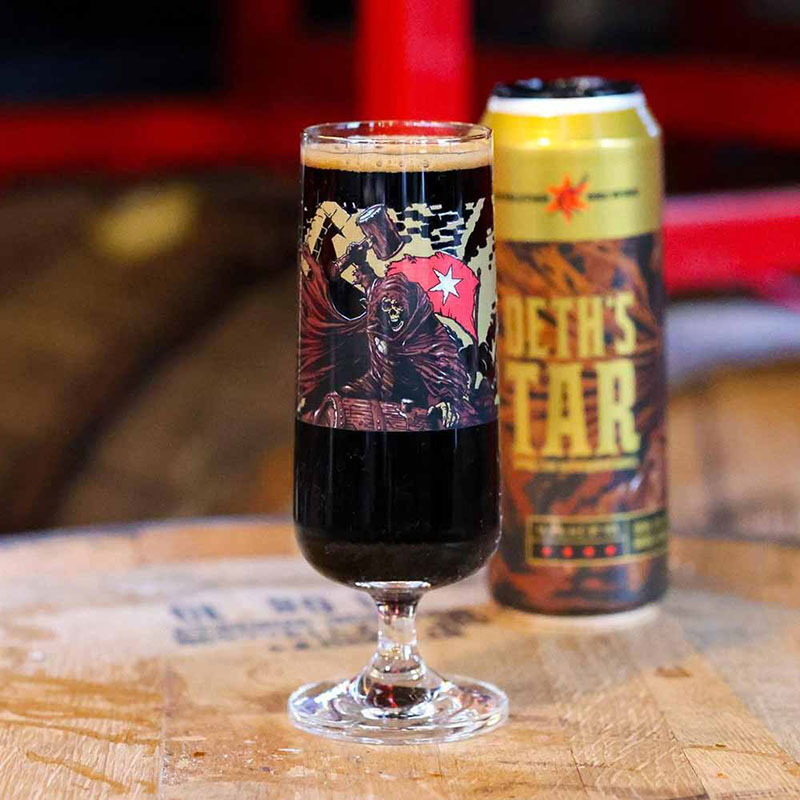
Photography courtesy of Revolution Brewing Company
Revolution’s oatmeal stout O’Hare Oatmeal Stout is 5.7% ABV and has a smooth body with a silky palate. But Cibak really likes the Deth’s Tar imperial stout.
Deth’s Tar is 14.8% ABV and thirty-five IBUs. Cibak says the beer is “great to drink on its own, then aged in a barrel, and an assortment of barrels to get the most complexity.”
Owen liked Eighth State’s collaboration beer with Fidens, Stress Dream. The 13% ABV oatmeal stout features notes of waffle cone, strawberry, coffee, and toffee.
“It has pseudo-elements of Neapolitan ice cream, and like you’re at an ice cream shop,” Owen says. “The high oat content brought out that breadiness that added another layer of depth to it.”



